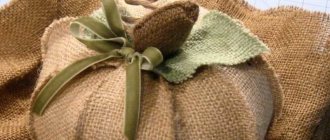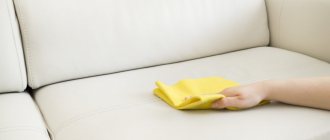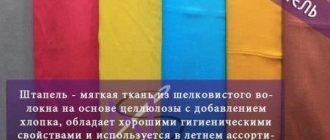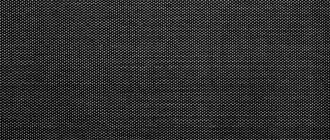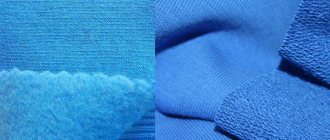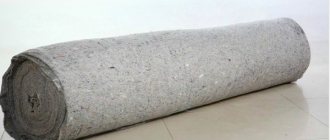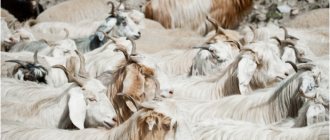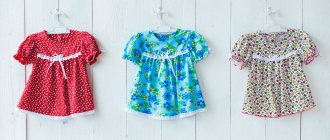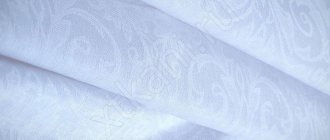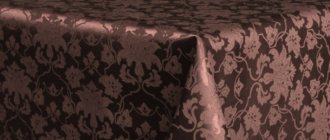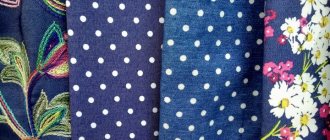In the group of environmentally friendly materials, this textile takes a leading place. Fabric for bags has been known for a long time. The scope of its application is not limited to packaging; today the material is used as a covering and is used in interior design and landscaping.
Everyone knows what burlap is. But its origin is not known for certain. Coarse fabric made from thick fibers of plant origin received technical status. A century ago, clothing made from burlap was common among peasants. You can see examples of homespun outfits in museum exhibitions dedicated to folk art and everyday life. Later, the material began to be used as packaging mainly for bulk products.
Description of texture
Photo gallery of burlap fabric
Burlap is a coarse fiber made from natural materials. It is made from harsh threads, due to which it has high tensile strength. The burlap fabric is porous, with a surface with a distinct relief, characteristic of a simple weave.
Moderately hard to the touch. There are gaps between the weft and warp threads to ensure optimal air exchange. The texture of burlap is similar in appearance to canvas. The photo shows that the threads of the material differ slightly in thickness. Thanks to the unevenness, relief is created, which can be played up in interior design using various techniques.
Origin story
Burlap is one of the most ancient fabrics on Earth. In Ancient Rus', hemp was grown for its production. Not only bags, but also clothes were made from linen. Large-scale production of burlap appeared in the 19th century.
Jute material was first produced in India and Asian countries. First, ropes were made from it, and then fabric - the basis for carpets and packaging containers.
In Jamaica, poor workers made trousers and shirts from old sacks. These clothes protected both from overheating and from the wind.
The British brought jute to Europe at the beginning of the 18th century.
In America, during the Great Depression in the 1930s, used washed bags were used to make bags, towels, baby diapers and clothing. In the 40s, a fashion trend arose, colored stamps were applied to the bags, and dress patterns were sold in stores along with the bags.
Composition - what is burlap made from?
What burlap is made from can be found on the product label. To produce the material, fibers of plant origin are used:
- linen;
- hemp;
- jute.
Expert opinion
Alyona
Fabric expert and technologist Alena Khlebnikova is ready to answer your questions.
Write to us
The canvases can use different types of threads, for example, flax and jute. Burlap is one of the most environmentally friendly materials.
Modern industry produces fabrics for technical purposes using synthetic fibers.
Types of fabric, distinguished by composition:
- Linen. The softest look of all in the group. Consists of flax fibers. Demonstrates antiseptic qualities.
- Jute. Tough, dense, wear-resistant material. Does not absorb moisture well.
- Mixed. Textile of medium hardness.
Use and what is made of fabric: watch straps, shoe bags, potato bags
The widest area of application for various types of burlap is transportation, as well as placement of various bulk substances in the food and agricultural industries. The exception is finely dispersed ones. Another advantage of this packaging is that it is reusable. But there are also disadvantages to such a bag: insufficient reliability, the product can rot, like the material itself, over time. Therefore, it is used with sufficient air exchange and the absence of excess moisture. This link will tell you about knitted rags.
Examples of what is made from burlap:
- cover;
- shoe bags;
- watch with strap;
- fabric for potato bags.
It can also be used in the fashion industry, when sewing clothes and shoes.
Production
The production technology of woven fabric is regulated by GOST 30090 - 93. Linen threads are most often used in weaving. In mixed versions, flax and jute are used predominantly in a 50/50 ratio. Less common are jute and hemp burlap without admixtures of other fibers.
In weaving, coarse bast threads made from flax, jute and hemp, characterized by a special structure, are used. The raw material is obtained from the inner part of plant stems. This method provides increased strength to the fibers, which is many times superior in properties to yarn from the surface sheath.
Textiles for technical purposes are made using the plain weaving method: by alternating overlaps of fibers directed perpendicularly. The density depends on the number of linear threads (weft). The state standard regulates the limits of the parameter: from 195 to 400 g/sq. m.
Burlap fabric of different densities
The yarn used in the production of burlap is thick. Thanks to this, the canvases are rough and moderately hard. Due to the peculiarities of weaving, gaps form between the warp and weft threads.
Raw materials and their properties
Burlap jute fabric
Durable and tough jute fiber is extracted from a plant of the linden family, which grows in the wet marshy soils of India, Bangladesh, Thailand, and China. The long stems contain lignin, a natural resin that resists rot, moisture and heat. The heat resistance of jute is impressive: it retains its properties at temperatures up to 300 degrees Celsius.
Exotic jute is widely used to make fabric for technical purposes. The popularity is explained by the plant’s good yield and low production cost. It is difficult to obtain a dense and uniform material from coarse, brittle and short jute fibers, so flax is added to it as a filler.
Linen
Linen fabric, traditional for Russia, is softer and more elastic than jute. High-quality yarn obtained from combed long fibers is used to make fabrics for clothing and bed linen. Coarse yarn is obtained from short fiber. It is used to produce twine, ropes, and burlap.
Elastic and durable flax not only absorbs and releases moisture well, but also has bactericidal properties.
Hemp
Hemp fiber, called hemp, is less susceptible to rotting than flax. The strength and hygroscopicity characteristics of hemp and flax options are similar.
The cost of hemp is lower, but in Russia hemp farming is in decline. China and Canada have become the world leaders in the industry, and production volumes are constantly growing. Drug-free varieties of hemp are successfully grown and processed abroad.
Resistance to salt water is a unique property of hemp. It is used in the production of ropes, cables, and steel cable cores.
Synthetic materials
Artificial fabrics are woven from chemical threads. Their main types:
- viscose;
- polyester;
- polyamide;
- polypropylene.
Inexpensive products made from polypropylene are most widespread. White materials are produced from primary raw materials, and green and gray shades are produced from secondary raw materials. Soft containers are made from lavsan, nylon, polyester, nylon and other synthetics.
Durable, lightweight and durable artificial fabrics are resistant to the scorching sun, chemicals, mold and rot. They do not emit toxic substances at room temperature.
The scope of application is wide and is determined by the specific characteristics of the textile.
- Sports and outdoor products are made from special Oxford weave polyester.
- Durable nylon is water-repellent.
- Smooth lavsan is biologically inert and does not lose its properties at high temperatures.
Characteristic
Detailed technical properties of bag fabric are given in the table below:
| Characteristic | Indicators _ |
| Raw material type | Natural plant origin |
| Purpose | Technical fabric |
| Yarn used | Bast fibers of jute, flax, hemp (hemp) |
| Method of weaving threads | Simple (smooth) |
| Density, g/sq. m. | 190 – 420 |
| Water resistance | Low |
| Hygroscopicity,% | 13 – 18 |
| Moisture absorption rate | Below average |
| Standard width of canvases, cm. | 106, 109, less often - 95 |
Open to see the entire table
| Breathability | High, for dense fabrics above average |
| Steam conductivity | High |
| Electrification | Minor |
| Side | Double-faced canvases |
| Dyeing method | Plain canvases |
| Wear resistance | Increased |
| Manufacturers | Russia, Belarus |
| Standardization | GOST 30090 – 93 |
| Price | Available |
Summarizing all the indicators, we can conclude that burlap is an environmentally friendly material, easily absorbs moisture and prevents it from getting inside the package, and provides high air exchange. Bast fibers ensured the fabric's ability to withstand high loads.
The material is not subject to rotting and is easy to care for. Easy to wash in automatic and manual modes.
pros
Main qualities of bag fabrics:
- resistance to impacts and mechanical stress;
- ease;
- durability;
- low cost;
- resistance to external factors, especially moisture;
- chemical inertness;
- environmental Safety.
- The most important property of flax-jute fabrics is hygroscopicity: they absorb moisture, but do not let it in. Air exchange is not disturbed, preventing rotting of the packaged product.
- Polypropylene is considered the safest compared to other plastics. The chemical affects humans only in high concentrations. The polymer is recyclable - this is a significant plus.
- Natural and some synthetic samples have antistatic properties.
Kinds
Universal textiles are widely used in various fields: packaging, arrangement of gardens and parks, interior design, forestry, construction, furniture production. Burlap is also used for handicrafts in the manufacture of souvenirs, household items, for decorating clothes, and in sewing bags.
Decorative
Linen is most often used as decorative fabrics. They are soft, unlike jute and hemp. To make crafts, choose materials of low and medium density. Souvenir bags, covers, and gift wrapping are made from burlap. Decorated with ribbons, embroidery, lace.
In interior decoration, burlap is used in the form of canvases, panels, and curtains. Cafes in country, Provence and boho styles are often decorated with different types of this textile. Texture opens up possibilities for design ideas.
Furniture
Modern trends in interior design have led to the popularity of burlap of any kind. A canvas with a simple texture is used to upholster furniture elements, for example, the head of a bed, small sofas, and armchairs. Covers are made from fabric. Due to its high strength and practicality, the material retains its visual appeal for a long time. Ease of care and price, along with originality, play an important role in the choice.
Jute
Burlap made from jute fibers is the most durable and wear-resistant type of this textile. Rough, rigid fabric is used as packaging and finishing material. In design solutions, jute burlap is used to decorate wall panels and garden corners for relaxation.
Good dimensional stability allows you to make covers, souvenirs, and bags from jute. It can also be used as a canvas for painting, embroidery with floss or glass beads.
Clothes
Burlap is rarely used in clothing. For stage performances, shirts and historical costumes are sewn, emphasizing the ethnic direction. For sewing, it is advisable to choose fabric of lower density from linen yarn.
The presence of burlap can be seen in designer clothing and accessories. The material goes well with leather, smooth soft fabrics, airy lace and classic sewing.
Packaging
Depending on the type of product and the conditions of its transportation and storage, one type of burlap is chosen. Linen has an antiseptic effect, jute provides maximum protection from moisture getting inside the package, and mixed ensures long-term preservation of the contents in the bag.
Application - what can be sewn
You can sew home interior items from burlap yourself: bedspreads, curtains, tablecloths, pillowcases for decorative pillows, beach bags and backpacks in ethnic style. The main thing is to approach the design and choice of fabric wisely.
The material lends itself well to dyeing, printing and sublimation. You can decorate things made of burlap with leather ribbons, appliqués, embroidery, and lace inserts. Burlap is used for embroidery. The clear structure of the canvas allows you to abandon the use of canvas.
How to paint at home
Before you paint at home, you need to choose a convenient method. There are two of them: store-bought and natural dyes. In the first case, an aniline dye is used, sold in powder form and diluted with water according to the instructions indicated on the package. Diagonal fabric can also be dyed with dye. Special liquid dyes are also available for sale.
The second method is more complicated, but more interesting, since a natural plant dye is used. Any colored substances of natural origin are used for these purposes. They can be bought in specialized stores and pharmacies. Some of the most popular are tea and coffee.
To obtain colored patches you will need the following:
- sackcloth;
- coloring matter;
- a bowl where the solution will be prepared;
- tongs or spoon for transferring and turning fabric;
- surface for drying material.
- iron.
The technology is the same regardless of the pigment:
- The solution is prepared by immersing it in hot water or boiling water. A coloring substance is also placed in water;
- burlap is lowered into the hot solution;
- bring to a boil;
- the fabric is taken out;
- hung or laid out on a rope or clean surface;
- smoothed with an iron.
The procedure takes no more than half an hour. And after just a few hours of drying, you can use this textile.
Adviсe
Reviews from needlewomen show that working with fabric is not difficult. Some features still need to be taken into account.
How to process the edge of burlap
Textiles, due to their porosity and the presence of gaps between the threads, are prone to shedding of sections. This can be attributed to both pros and cons.
To make working with the material comfortable, experienced craftswomen recommend rinsing the fabric in water with the addition of PVA glue before cutting. This will help reduce thread fraying.
The edges are treated with a double hem, edging, and dense overstitching.
In the manufacture of small-sized products (napkins, table runners, etc.), it is permissible to use fraying for good, making fringe along the edges. To do this, you need to sew a fine zigzag seam around the perimeter, leaving allowances of the required size, then carefully pull out the weft and warp threads along the edge.
How to bleach burlap
It is not recommended to bleach finished products for technical purposes, including bags and packaging. In some cases you have to break the rules. The color palette of textiles is poor. To create designer objects, it becomes necessary to make the canvas lighter.
To do this, use bleaches according to the recommendations for their use. Important! When lightening fabric using “Whiteness”, it must be remembered that chlorine significantly reduces the strength of the fibers and the durability of the material.
How can you replace burlap - similar fabrics
The following materials are similar in texture and appearance to burlap:
- linen;
- cotton types of canvas;
- calico.
Textiles with a pronounced texture, characteristic of plain weave, can replace burlap. The choice depends on the purpose of the canvas.
For products for which wear resistance and the ability to withstand heavy loads are important, instead of burlap, you can use natural, mixed and synthetic fabrics with similar properties: cordura, tarpaulin, canvas, moleskin and other types of technical fabrics.
Flaws
- The main disadvantage of burlap is its high flammability. There are special impregnations that increase fire-resistant properties, but the material remains flammable.
- In unfavorable conditions, natural fabrics are subject to the natural process of rotting.
- Nylon, lavsan and other types of synthetics have low hygroscopicity and are highly electrified.
- Polypropylene is waterproof, but this useful property has a downside: it does not allow air to pass through well. Manufacturing companies are working on this shortcoming. New items with ventilation inserts have appeared on sale.
On a note
Another modern trend is the production of eco-packaging. Natural components or polymers with biodegradable additives serve as raw materials for eco-bags. Their decomposition period varies from 1 month. up to 3 years.
